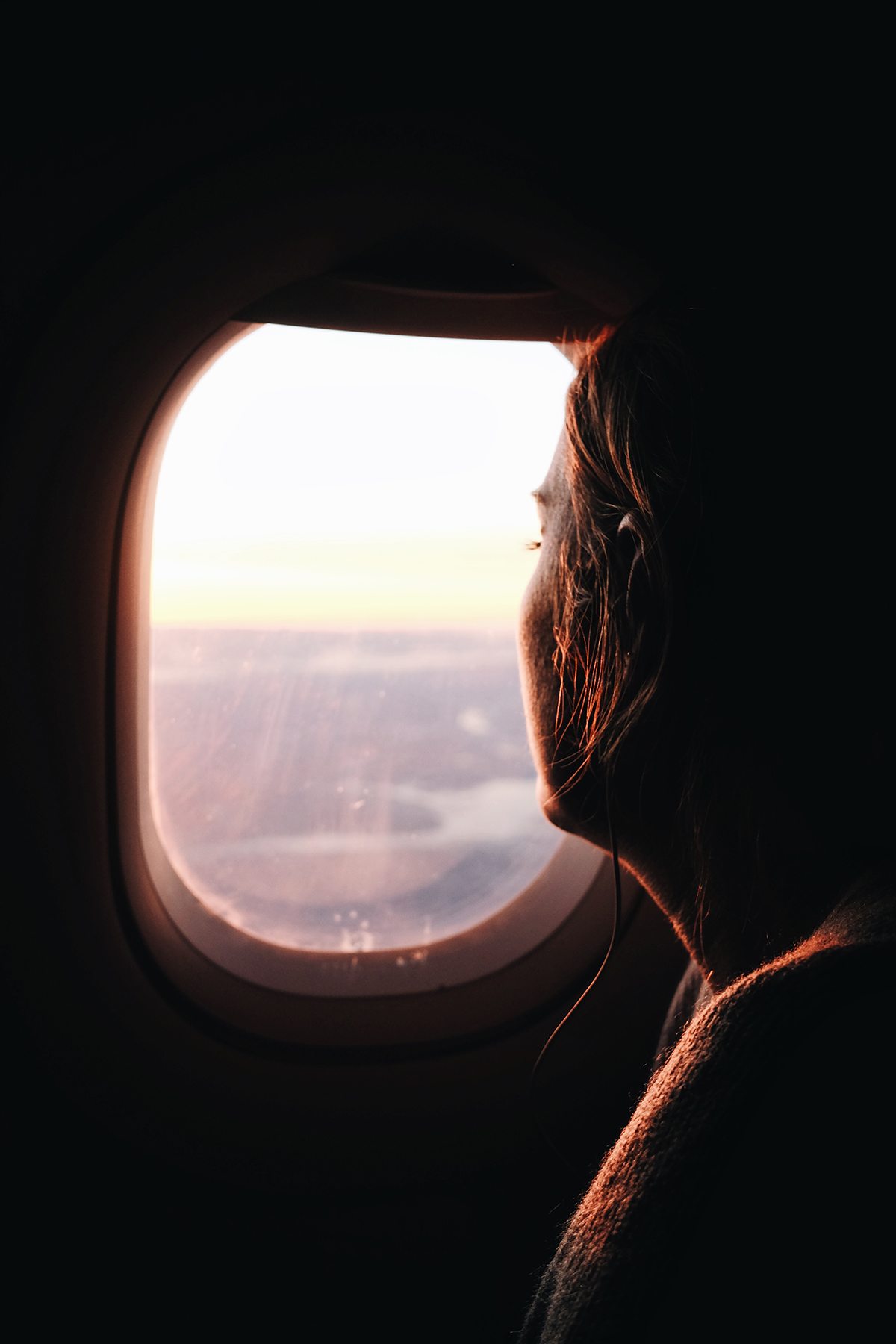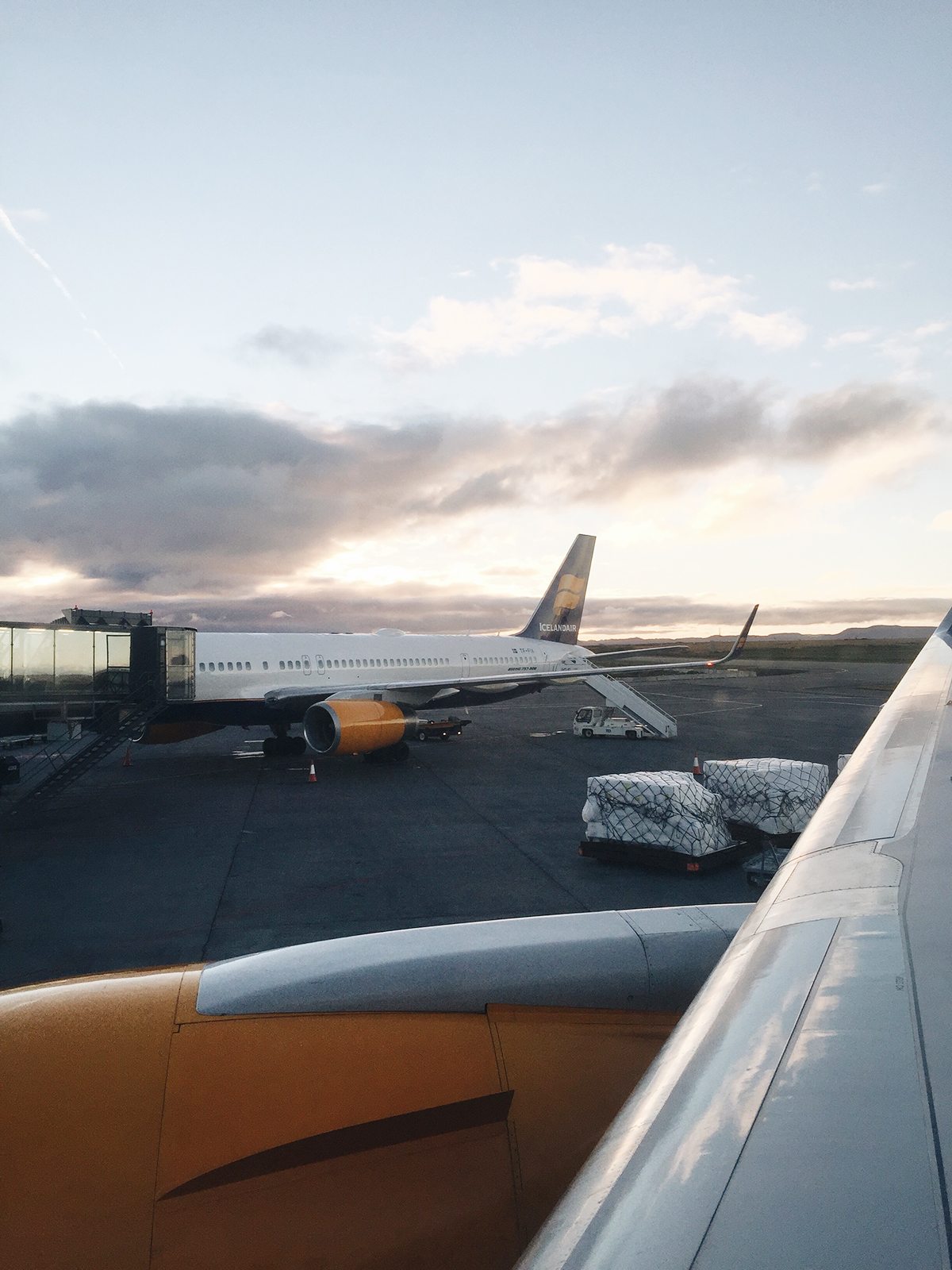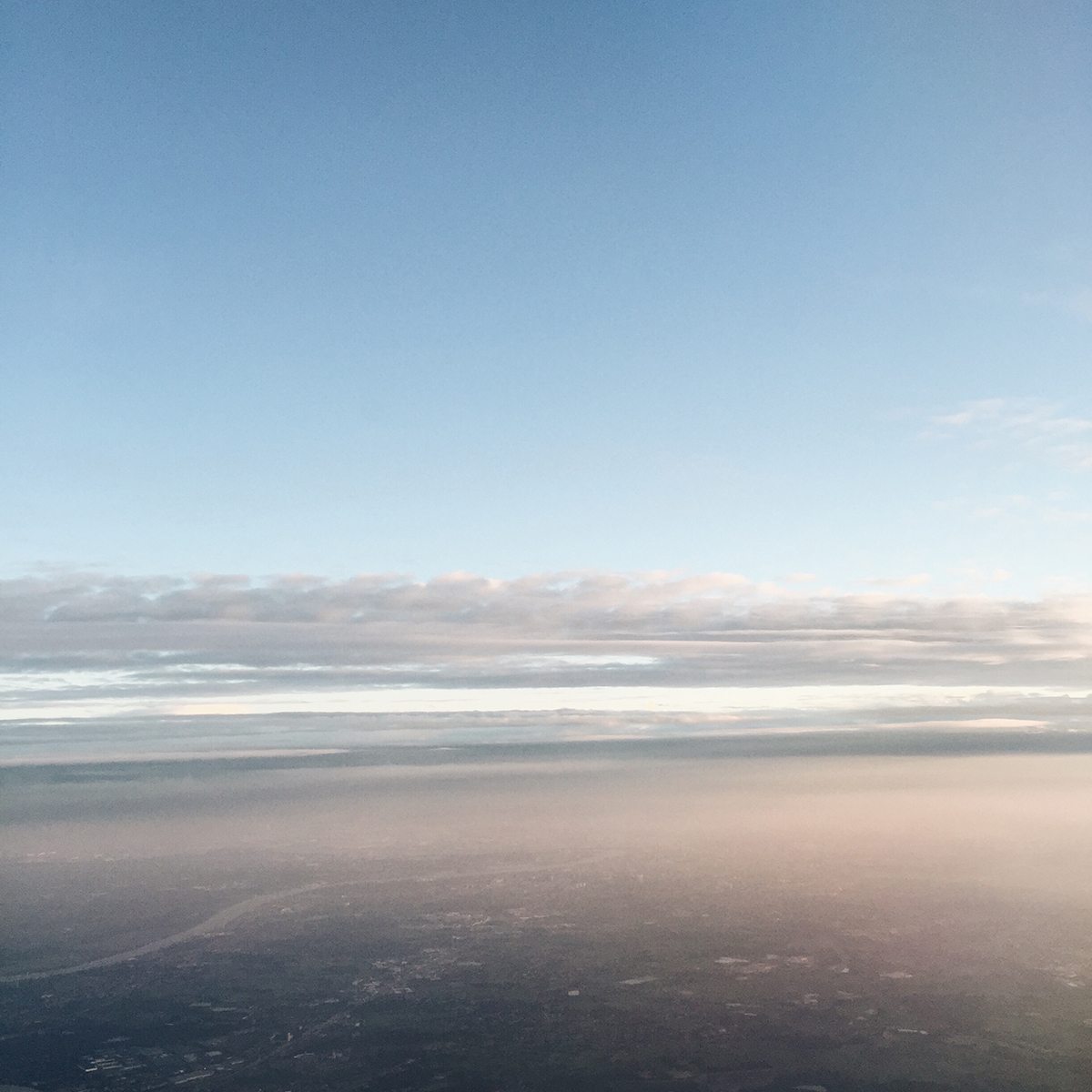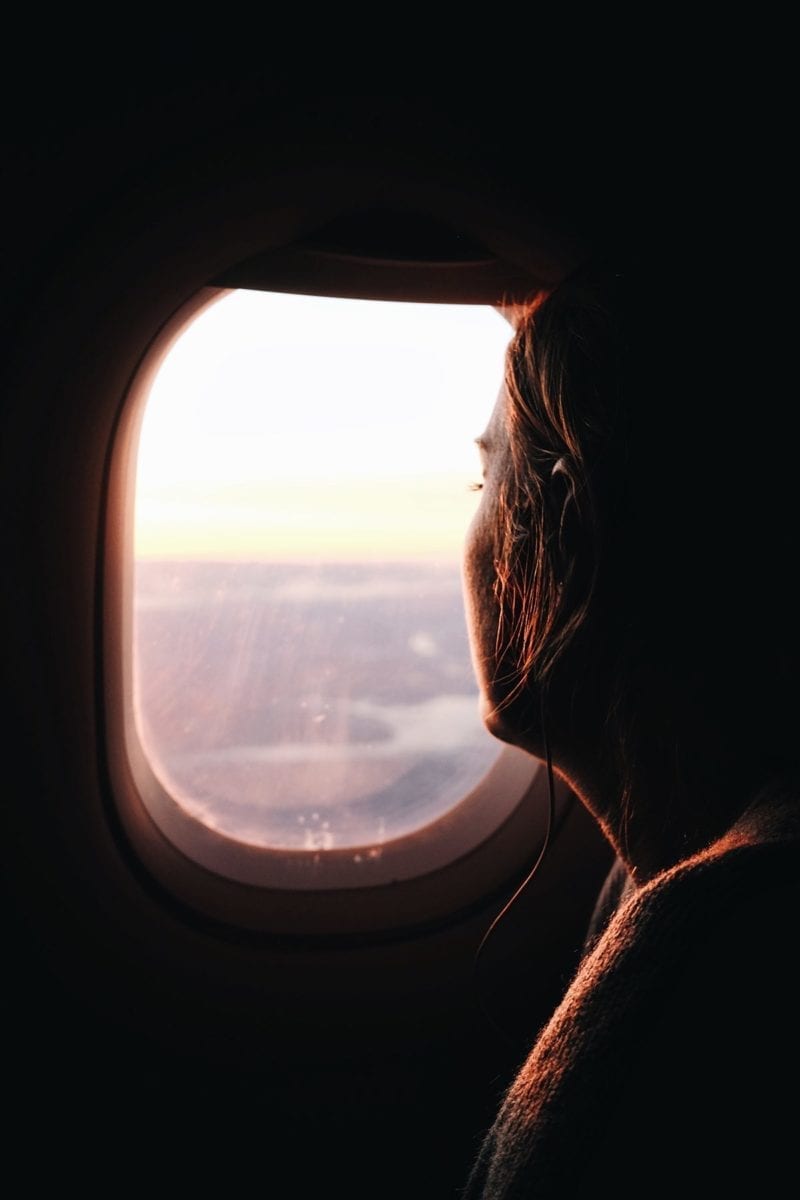 This post was brought to you by Icelandair. Click here to begin your travel to over 25 European destinations!
This post was brought to you by Icelandair. Click here to begin your travel to over 25 European destinations!
Let me begin with the disclaimer that I’m not a mental health professional. Anxiety presents across a wide spectrum with varying degrees of treatment, so this shouldn’t stand in place of advice given by a therapist or doctor, if you have one.
That said if you, like me, love traveling but get a few extra goosebumps when heading down the jet bridge, then this is for you.
I don’t know when it happened, exactly. I remember boarding flights in high school (even after 9/11) and specifically thinking how easy it was to fly. Not scary at all! I’d tell myself and mean it. Then, somewhere in my early 20s after moving across the country, traveling abroad and developing an incurable sense of wanderlust, I began panicking. Pre-flight, mid-flight, sometimes as soon as I’d book a ticket, the nerves would creep in. But I’ll be in a plane! I’d think and subsequently start researching homeopathic sleep aids that I hadn’t already tried.
It wasn’t long before I realized that I needed to do something about this, not just for the sake of any companion I might be with, but for my own health and enjoyment of life. Besides, shouldn’t the flight be part of the excitement of traveling? It’s embarrassing, even a little shameful, for someone who prioritizes “leaving” as much as I do to admit how often pesky fears can needlessly prevent me from doing something I love.
Well, no more.

And I say the same to my fellow white-knuckled fliers. Below are some of the tactics I rely on most regularly to handle in-flight anxiety.
Here’s to booking tickets with excitement and confidence… as it should be!
1. Learn about turbulence.
In a former life I was a pre-med student. I would spend hours in the lab followed by hours at home studying organic chemistry and physics in prep for the MCAT. Oddly enough, it was during this time when I was the least scared to fly; concepts like Bernoulli’s principle and fluid dynamics were drilled into my brain.
They aren’t anymore. So, to quote a science term: Fear and knowledge are inversely proportional. When one increases, the other decreases and it wasn’t surprising that as soon as I started distancing myself from the logical, realistic side of flight, the scarier every little bump up above became.
Though you can’t control turbulence, you can control what you know about it and that makes all the difference. Understanding the very normal, scientific explanations behind turbulence (and not just being told that turbulence is normal) can significantly change your in-flight mood. I found this short video incredibly helpful to connect the logical with the visual side of the brain and basically undermine any absurd fear that a plane can randomly fall out of the sky. It harkens back to my Bernoulli days in a far easier way. (Hello, jello!)
Though you can’t control turbulence, you can control what you know about it and that makes all the difference.
2. Plan specifically for the flight.
As with any good process, planning is key. And if you get a bit jumpy about airplanes, then specifically planning for the time you’ll be in air is of paramount importance.
First, I do some research about the airline I’m flying to see what their in-flight entertainment is like. Do they offer channels? Or just select movies? Is WiFi available? Bonus points for mood lighting. (Fun Fact: Icelandair’s interior mood lighting made a world of difference on a recent flight from Chicago to Reykjavik. Knowing something was designed with me the customer in mind, not the bottom dollar, truly made me feel like I was a valued part of the flight. Little touches like that go a long way when you’re feeling extra sensitive!)
I’ve even been known to look up customer reviews and images of the inside of a plane just to mentally tell myself, “Yes, people have done this before.” Anything to eliminate surprises and arm myself with as much knowledge as I can beforehand.
Portable entertainment devices are ubiquitous now, so I won’t remind you to bring one, but I will remind you to charge it well in advance of take-off (the first time you forget to do this, you’ll never forget again) and download it with seasons-worth of TV shows. I prefer TV shows to movies on planes because I get addicted to them faster and get through them quicker. Nothing helps time “fly” by like some Gilmore Girls en route to Europe or the latest BBC drama I’ve yet to watch.
Helpful Tip: TV shows make it easy for me to countdown the remaining hours I have left to fly. I try to equate time in the air with the last afternoon I spent binge-watching episodes on the couch. It works!

3. Do something normal during take-off.
Take-off is typically hardest for me, so sometimes it can make anxiety worse if I build up that time with a pre-flight ritual of earplugs, calming pill, swig of water and frantic breathing. Instead, I’ve starting engaging my seatmate or travel companion in conversation during take-off to give myself a sense of normalcy; a chat will usually anchor me outside of my mind.
If there is a particular part of flight that makes you nervous, then do something during that time that you’d typically do at home or at work. Update your planner. Clear out old text messages. Edit photos from yesterday’s brunch. For a lot of us, being in an airplane is something outside the norm, which means our senses will be heightened and our perception of truth skewed. Connecting the normal with the “slightly-less-than-normal” can be a helpful tactic for keeping anxiety at bay.
4. Regain control of your mind.
The fight or flight response is real; even when an imagined threat is perceived, the amygdala in the brain produces a biochemical response in the body and this is what can make an anxiety attack feel so real and debilitating.
First, know that your mind will try to conquer you. It was a lightbulb moment for me when I realized that my mind is actually not a reliable source of information while on a plane and that the less attention I give those “what ifs,” the quicker I can find a place of peace. It’s not about pretending you aren’t afraid, but it is about saying, “I know that I’m afraid right now, and I also know that means my body is trying to react in a way that isn’t rooted in the truth.” That subtle act of regaining control over what may feel like an uncontrollable situation can keep the amygdala calmer for longer, lessening a biological response and getting you back to baseline faster.
It was a lightbulb moment for me when I realized that my mind is actually not a reliable source of information while on a plane and that the less attention I give those ‘what ifs,’ the quicker I can find a place of peace.
Helpful Tip: Keep a photo of a loved one, pet or favorite place on your phone and look at it when you’re nervous. The positive emotions released when you look at that happy scenario will “reward” your brain, even though your surroundings are uncomfortable. You can physiologically trick your body into associating flight with positive emotions instead of the negative ones you fear.

5. Engage the senses.
When you’re soaring through the air in a metal tube, you are literally ungrounded. This, again, can heighten the mind’s ability to distort or misread information and kick anxiety into overdrive.
For me, whenever I’m feeling that panicky sensation I immediately focus on my senses. I’ll take out a pack of gummies and let one dissolve in my mouth, noticing its taste or its feel on my tongue. Then, I zero in on what I’m listening to — even repeating a line in a song or a show to concentrate on what I hear that isn’t plane-related. I’ll put on some fancy hand lotion that I purposely bought to use mid-flight and firmly plant my feet on the floor to better create a grounding sensation. I’ll also press on stress-relieving pressure points to get myself out of my head and into the very real, very safe present moment.
Above all (no pun intended), remember that you are doing something incredibly commonplace — this is a fun visual — despite how unnatural flying might feel. Stay focused on what you have to gain on the other end of your flight. Chances are, you’re traveling to get outside your routine, to seek the unexpected and to live a full, colorful, adventurous life in the first place. There’s no reason to believe your vacation cannot start the second you board the plane.
What are your favorite parts about flying?
Feature Image via Christophe Morre












4 comments
This was SO helpful. I take advantage of every break and holiday I have in college, which typically means I’m flying somewhere to explore. Overtime, flying has brought out such an uncontrollable reaction in me that I have not been able to shake. I am looking forward to trying these methods out and just one I’d like to add that has recently helped a bit is picking a favorite song for each travel experience (basically a theme song for each trip) and I blast it on repeat during the most anxious parts of the flight, which for me involves taking off and landing. Although I still feel the anxiety creep, I also can’t help but to groove to my favorite jam. Thanks again!
Yes!! Music works wonders!
This is so incredibly helpful. I’m always anxious on flights, especially more recently, so I’ll be trying out some of these tips on my next trip.
I find that keeping myself occupied during the parts of flights I’m most nervous about, take-offs and landings, is a great way to handle nerves. Beyond that, I’m quite comfortable with flights. My favourite part of flying is actually the airline meals – I don’t know why but I find them quite tasty!
–
Charmaine Ng | Architecture & Lifestyle Blog
https://charmainenyw.com